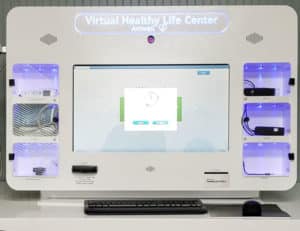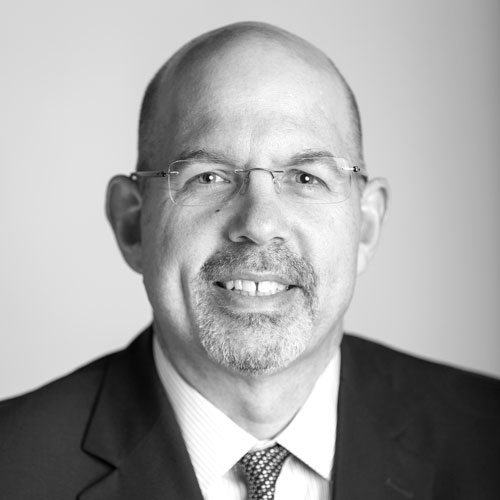In healthcare, there are two key ways to approach benefits: as a necessary, yet cumbersome, part of running an organization, or as an exciting opportunity to enhance the employee experience and well-being. At Mohawk Industries, a flooring manufacturing company headquartered in Georgia, Kim Johns and her team take the latter approach.
“At Mohawk, there is a lot of passion around benefits,” says Johns, Mohawk’s director, employee benefits. “In a lot of places, benefits are one of those things that you have to have. Everyone here has tremendous energy around how we can do better, how we can help our employees and their families, and how we can spend our money better and wiser, so it becomes more real.”
That energy has translated into the creation of a new, robust care coordination and employee benefits program, which culminated in a cutting-edge network of healthcare providers throughout the United States and an on-site care team that Mohawk employees are able to access easily and efficiently. Additionally, the care providers in Mohawk’s network are able to share information with one another, which helps ensure patients receive the most comprehensive and well-informed care possible, Johns says.
The first layer of this new program begins with Mohawk’s on-site care teams. These individuals work in on-site clinics at many of Mohawk’s manufacturing facilities and are dedicated to educating employees about their healthcare options; they assist employees while they navigate the complex healthcare industry.
“We’re starting with some of the basics,” Johns says. “Let’s make sure everybody is getting their preventive screenings that are appropriate for their age and gender. Let’s make sure everyone gets their flu shot. Let’s make sure that, if you have multiple conditions and you’re on multiple medications, that you’re taking all of your prescriptions correctly.”
As part of this initiative, Johns and her team are also encouraging employees to access telehealth services. To start, Johns and her team would like to migrate patients who have acute care concerns to these platforms, as a way to make care more accessible and less intimidating than going to a physician’s office.
But for employees who might need more comprehensive care than preventive screenings and regular check-ups, Johns and her team also spearheaded the creation of a sweeping network of healthcare providers that offer an array of services for individuals facing any health issue.

Johns and her team worked on bringing this plan to fruition for more than a year before rolling it out for employees on January 1. In total, the network is composed of about 1,900 physicians and six on-site clinics in Northwest Georgia—where about half of the company’s US workforce resides—with eighteen more spread out across the country. Together, those clinics serve about 32,000 members in Mohawk’s health plan. But the network took years of exhaustive planning by Johns and her team to make it to its successful rollout in 2018.
Johns’s strategic vision for the network was simple: create a resource for employees that can aid in the treatment of as many diseases as possible, in an affordable and accessible way for Mohawk employees and their families. Ultimately, she and her team wanted to have the safest and healthiest population of workers in the industry. To achieve that grand vision, Johns had to balance her larger vision while keeping track of all the minuscule details that go into an initiative of this size, she says. It also meant getting the right partners in the room to help make the process go as smoothly as possible.
“One of the things that Mohawk takes pride in, organizationally, is that we’re innovative,” Johns says. “So, we had to have partners that were willing to be innovative and take risks. Everybody had to get comfortable to really drive different thinking and different processes for what we’re doing here.”
A major risk that Johns and her team took throughout this process was to get the largest healthcare system in Northwest Georgia to participate in the network. A significant portion of the network’s ability to provide a wide array of services to patients in the region hinged on this health system participating in their initiative, so it was critical that Johns and her team explained their goals and processes in a way that helped the system see the value of partnering with Mohawk.
It also required Johns to effectively convey her vision to the health system’s stakeholders, assure them that the project would be completed as envisioned, and that it would be a mutually beneficial partnership for the system and the patients they serve. That meant coming up with a solution to ensure that the health system could treat Mohawk patients through the network without disrupting physicians’ normal workflow.
“They might only have fifty Mohawk patients out of the two thousand they care for, so they’re not going to change their whole workflow for us,” Johns says. “But if we can give them tools and resources that they could make available to all of their patients, then that’s a really big win for us and for them.”
In the end, Johns’s pitch was successful, and the health system is now an integral part of Mohawk’s clinically integrated network, she says.
Looking ahead, Johns is excited to start seeing network providers share information and to begin gathering data about which programs and services within the network are most popular with Mohawk employees. As this information comes in, Johns will continue to refine the network’s offerings and work to provide new services as needs arise. She also wants to see this initiative make an impact even beyond the lives of the members of the company’s health care plan.
“We have no intention that this is going to be a Mohawk-exclusive network,” Johns says. “We really want it to be available for other employers in Northwest Georgia who want to take advantage of this tremendous opportunity to interface with the provider community, while managing costs and managing the health of their employees in a better, different way.”
Photo courtesy of Mohawk Industries

